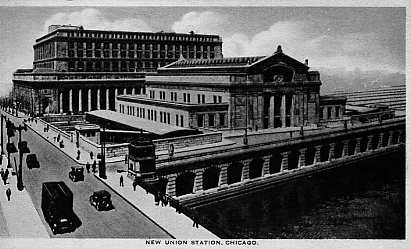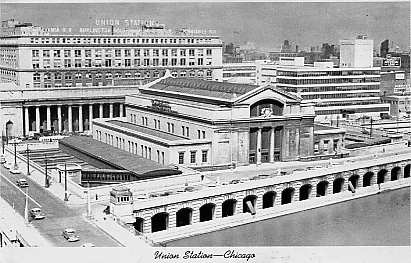
Union Stations Across the U.S.
By Beryl Frank
Chicago, Illinois
1881 was the year that several railroad companies built one of the nation's busiest train stations. The city was Chicago.
However, this station could not accommodate the number of passengers who used the railroads. A new building or buildings had to be erected and this was the beginning of Union Station, Chicago.
By 1913, Daniel Burnham was the chosen architect for the new station. He was well known for his classical design - some called it Beaux-Arts. Unfortunately for Mr. Burnham, he did not live to see the completion of the station he designed. After his death, another architectural firm was chosen to complete the new Union Station.
The work was slowed down by labor strikes as well as World War I and took 11 years to complete. The cost was 50-75 million dollars. This Union Station was completed and opened for full passenger rail service in May 1925.
Funding for the new Union Station came from four different railroads. They were the Chicago and Alton Railroad; Burlington and Quincy Railroad; Chicago, Milwaukee and St. Paul Railroad; and most heavily funded by the Pennsylvania Railroad.
The station occupied 10 city blocks and some thought it was a city within the city of Chicago. It had its own police force, jail and hospital, as well as many restaurants and shops. In the 1940's, this Union Station saw 100,000 people daily using the facilities. Over 300 trains went through each day.
The Great Hall, which still stands, has pink Tennessee marble floors and walls, Corinthian columns and high vaulted skylights and long wooden benches.
In 1969, the concourse was destroyed and rebuilt along with two new office buildings above the station.
Today, Chicago Union Station serves over 50,000 commuters and travelers daily.

This view of the first Union Station in Chicago was taken at the corner of Canal and Adams streets on the west side of the city.

The new Union Station was funded by four different railroad companies. To accommodate all of them, the station had to be big... and it was.

By 1960, the traveler could see the name Union Station in the back of the complex. The automobiles on the street looked to be the style of the 1960's.
.